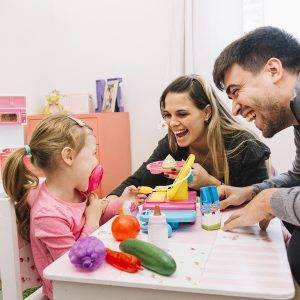Here are some tips indicated by the WHO (World Health Organization) to avoid the anxiety that, in these days of forced quarantine, could arise in children:
1. Children can respond to stress by expressing their emotions differently
For example, they may become more eager for contact, more anxious, more lonely, angry, agitated. Respond to your children’s reactions in a way that is encouraging and supportive, listen to their emotions and concerns .
2. Children need adult love and attention in times of trouble
Give them extra time. Sometimes engaging in a creative activity, such as playing, drawing, or cooking together, can facilitate this process. Children feel relieved in a protected environment where they can express and communicate their feelings.
3. Remember to listen to your baby, speak kindly and reassure him
4. If possible, create opportunities for play and relaxation

5. Children should be as close as possible to their parents or guardians and their families
It is not recommended to separate children and families as much as possible . If this separation occurs, for example in the case of hospitalization, regular contact should be ensured through the telephone or video calls scheduled twice a day or through other means appropriate to age (eg social media).
6. Maintain your daily routine and planned activities as much as possible
Or create new ones in a new environment, including school or learning activities and time for play and relaxation.
7. Talk to your children honestly
Explain to them what is happening and give them clear information on how you can reduce their risk of getting infected by the virus by choosing your words carefully for them to understand, depending on their age.
8. This also includes the possibility of informing them, in a reassuring way, of what could happen if a family member or the child himself, for example, should feel unwell and have to go to the hospital to be treated by doctors.
If your children have concerns, addressing them together can ease their anxiety . Children will observe adult behaviors and emotions as a model for how to manage their emotions in difficult times.

